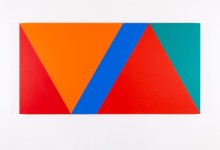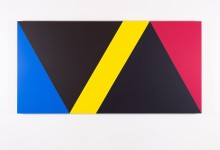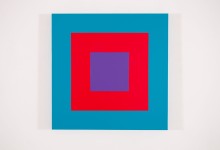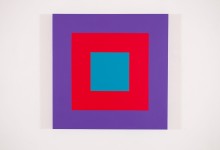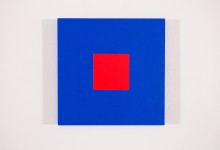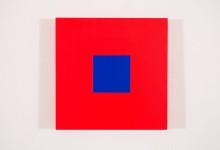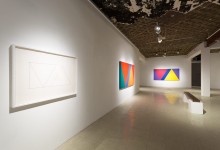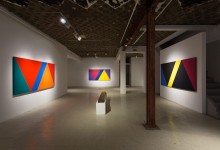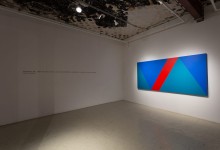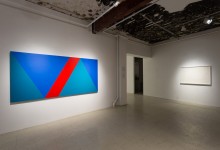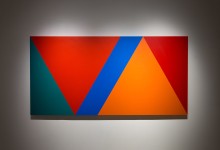Opening reception: Saturday, May 4, 2019 from 3-5 p.m.
Claude Tousinant : Variation 59 : suite de cinq tableaux à structure identique, symétrique et réversible, trouvée par hasard
Text by Nathalie Agostini de Francisco
He who wants to become a master of colour must see, feel and experience each individual colour in its many endless combinations with all other colours. Colour must have a mystical capacity for spiritual expression, without being tied to objects. – Johannes Itten, The Art of Colour (1961)
One of the leading artists in developing abstract painting in Canada, Claude Tousignant graduated from the School of Art and Design at the Montreal Museum of Fine Arts in 1951 when he had already begun to research abstract forms in his practice. Together with Guido Molinari (1933-2004), Tousignant actively promoted abstract art in the region, and through their work these artists collectively persuaded a society conditioned to representation in art that, in fact, it was possible to paint in a non-figurative style.
The new works presented at Art Mûr came about when the artist made sketches in order to find the simplest form with which to cut isosceles triangles into four-by-eight-foot sheets of plywood. Guided by intuition, Tousignant found a composition that seemed to him the most interesting structure through which to make paintings. He created five paintings with the same structure and composition but different colours, “with a different game between the colour masks.”
The perceiving eye that scans Tousignant’s painting traces it over a few times, skips, treads or bounces across the plains of colour from corner to corner and back again, and seeks to synthesize information into recognizable patterns. If the circular target paintings that make up one of Tousignant’s most prolific phases draw the viewer into the core of the canvas as through hypnosis, then the triangular masks, with their upward and downward slopes, have the ability to arrest and to throw the viewer off.
Sometimes, the senses are soothed by the harmonious use of disegno e colore (design and colour) that seem to frame and stabilize our perception of the work, as with the pink and yellow triangles surrounded by a sea of blue, Variation 59… #4. Other times, when more colours are incorporated – particularly contrasting hues of orange-red and blue-green as in Variation 59… #2 – that vie simultaneously for the viewer’s attention, the triangles’ segments seem to extend and radiate far outside of the limits of the frame, as though the work is part of a larger puzzle that the eye cannot behold and that only a step backwards – perspective – can address.
Tousignant’s paintings retain something of Minimalist sculpture, unabashedly devoid of content. But the works are not an empty shell on which can be projected phantasmagoric new forms. Beyond formalism, the works are in spite of their powers so self-contained that they resist interpretation. The bold use of colours functions as a shield, mesmerizing and subjugating the viewer to observe and to interrogate their own experience: what is it to perceive, to synthesize sensory information and to ultimately, to create meaning? Once each form and colour is seen, felt and experienced, then the capacity for spiritual expression can occur.


